The Healing Benefits That Ceramics and Pottery Can Bring
In today's fast-paced world, where stress and anxiety seem to be constant companions, finding a sanctuary for the mind and soul is essential. One such sanctuary can be found in the world of ceramics and pottery. Engaging with clay is not just about creating beautiful objects; it's a profound journey that can lead to emotional healing and personal growth. This article delves into the therapeutic effects of ceramics and pottery, highlighting their impact on mental health, creativity, and mindfulness through various practices and techniques. So, grab your apron and let’s dive into the soothing world of clay!
Imagine the sensation of cool, soft clay slipping through your fingers as you mold it into shape. Working with clay can be a meditative experience, promoting relaxation and reducing stress. The tactile engagement with clay fosters emotional well-being and a sense of grounding. Just like a warm hug on a cold day, the act of shaping clay can provide comfort and solace. When you immerse yourself in this creative process, you may find that the worries of the day begin to fade away, leaving you in a state of blissful focus.
Pottery is more than just a craft; it’s a practice that encourages mindfulness. As you sit at the wheel or hand-build your piece, you are required to focus on the moment, paying attention to the feel of the clay, the rhythm of your hands, and the sounds around you. This level of presence can enhance your awareness and appreciation of the here and now. It’s like a mini-vacation for your mind, allowing you to escape from the chaos of daily life and immerse yourself in the creative flow.
Creating pottery allows individuals to express their emotions and thoughts artistically. The clay becomes a canvas for your feelings, whether you’re sculpting a joyful piece or one that reflects deeper struggles. This artistic expression through ceramics can facilitate emotional release and self-discovery. You may find that the act of creating helps you process feelings you didn’t even know were there. It’s akin to writing in a journal, but with a tangible, beautiful outcome that you can hold in your hands.
Participating in pottery workshops can provide community support and connection. These group activities foster relationships and improve mental health, creating a sense of belonging. Imagine sitting around a table with others, sharing laughter and stories while your hands work together with clay. The camaraderie and support from fellow participants can be incredibly uplifting. It’s a reminder that you’re not alone in your journey, and the shared experience can be a powerful catalyst for healing.
On the flip side, engaging in pottery as a solitary activity can enhance personal reflection. Working alone with clay allows for introspection, offering a quiet space to explore your thoughts and feelings. It’s in these moments of solitude that you can truly connect with yourself, discovering insights that may have been buried under the noise of everyday life. Think of it as a personal retreat, where the only agenda is your own creativity and self-exploration.
The sensory experience of working with clay—its texture, weight, and temperature—can be incredibly soothing. Engaging with these sensory elements contributes to emotional healing and relaxation. The simple act of kneading the clay can be akin to a stress ball, providing a physical outlet for tension. The more you engage your senses, the more you’ll find yourself grounded in the present moment, allowing worries to drift away like clouds in the sky.
Art therapy often incorporates ceramics as a tool for healing. Therapists use pottery to help clients process emotions and overcome trauma. The act of creating can serve as a bridge to communicate feelings that are often difficult to express verbally. It’s a safe space where individuals can explore their inner worlds and begin to heal. The beauty of ceramics in art therapy lies in its ability to transform pain into something beautiful, creating a tangible representation of the healing journey.
Real-life examples illustrate the transformative effects of ceramics in therapeutic settings. Many individuals have shared inspiring stories about how pottery has changed their lives. For instance, one participant in a pottery class found that the act of creating helped her cope with grief after losing a loved one. Through her sculptures, she expressed her sorrow and eventually found a way to celebrate the memories of her loved one. These success stories remind us of the profound impact ceramics can have on our emotional health.
Integrating pottery into daily routines can enhance well-being. You don’t need to be a professional artist to enjoy the benefits of ceramics. Simple activities, like making a small bowl or sculpting a figure, can be incorporated into your life for ongoing therapeutic benefits. Consider setting aside a few minutes each week to play with clay. It’s a small commitment that can yield significant rewards for your mental health.
- What are the mental health benefits of working with ceramics?
Working with ceramics can reduce stress, promote mindfulness, and enhance emotional expression. - Do I need to be skilled in pottery to benefit from it?
No, anyone can benefit from the therapeutic aspects of ceramics, regardless of skill level. - How can I start incorporating pottery into my life?
Begin by taking a local pottery class or setting up a small workspace at home to explore your creativity.

The Therapeutic Power of Clay
Have you ever felt the urge to dig your hands into something soft and malleable? That’s the therapeutic power of clay calling to you! Working with clay isn’t just about creating beautiful pottery; it’s a deeply meditative experience that can promote relaxation and significantly reduce stress levels. Imagine the sensation of cool, damp clay between your fingers as you shape it into something uniquely yours. This tactile engagement can foster a profound sense of emotional well-being and grounding.
When you immerse yourself in the art of pottery, you’re not just molding clay; you’re engaging in a form of self-care that allows you to disconnect from the chaos of everyday life. The act of kneading, pinching, and rolling clay can be incredibly soothing, much like a gentle massage for your mind and soul. It’s almost as if the worries of the world melt away, leaving you with a sense of clarity and calm. This is where the magic happens; the simple act of creating can transform your mental state and encourage a more positive outlook on life.
Moreover, working with clay can serve as a form of emotional release. Many people find that as they shape their creations, they are also shaping their thoughts and feelings. It’s a cathartic process where the struggles and stresses of life can be expressed through the medium of clay. Just think of it as a tangible representation of what you’re going through—each piece you create can symbolize a part of your journey, whether it’s joy, sorrow, or healing. This connection to the material can be incredibly powerful, allowing for a deeper understanding of oneself.
Incorporating clay work into your routine can also enhance your sense of mindfulness. As you focus on the texture, weight, and movement of the clay, you become more present in the moment. This practice of mindfulness can help you cultivate a greater appreciation for the little things in life, reducing anxiety and promoting a sense of peace. In fact, studies have shown that engaging in creative activities like pottery can lead to lower levels of cortisol, the stress hormone, thereby improving overall mental health.
So, how can you tap into this therapeutic power of clay? Consider joining a pottery class or workshop where you can learn the basics and connect with others who share your interest. Alternatively, you can set up a small workspace at home, allowing you to indulge in pottery whenever you need a break. Remember, it’s not about creating a masterpiece; it’s about enjoying the process and reaping the benefits of this ancient art form.
Ultimately, the therapeutic power of clay lies in its ability to connect us with our emotions, enhance our mindfulness, and provide a creative outlet for self-expression. Whether you’re a seasoned artist or a complete novice, the journey with clay can lead to profound personal growth and emotional healing.
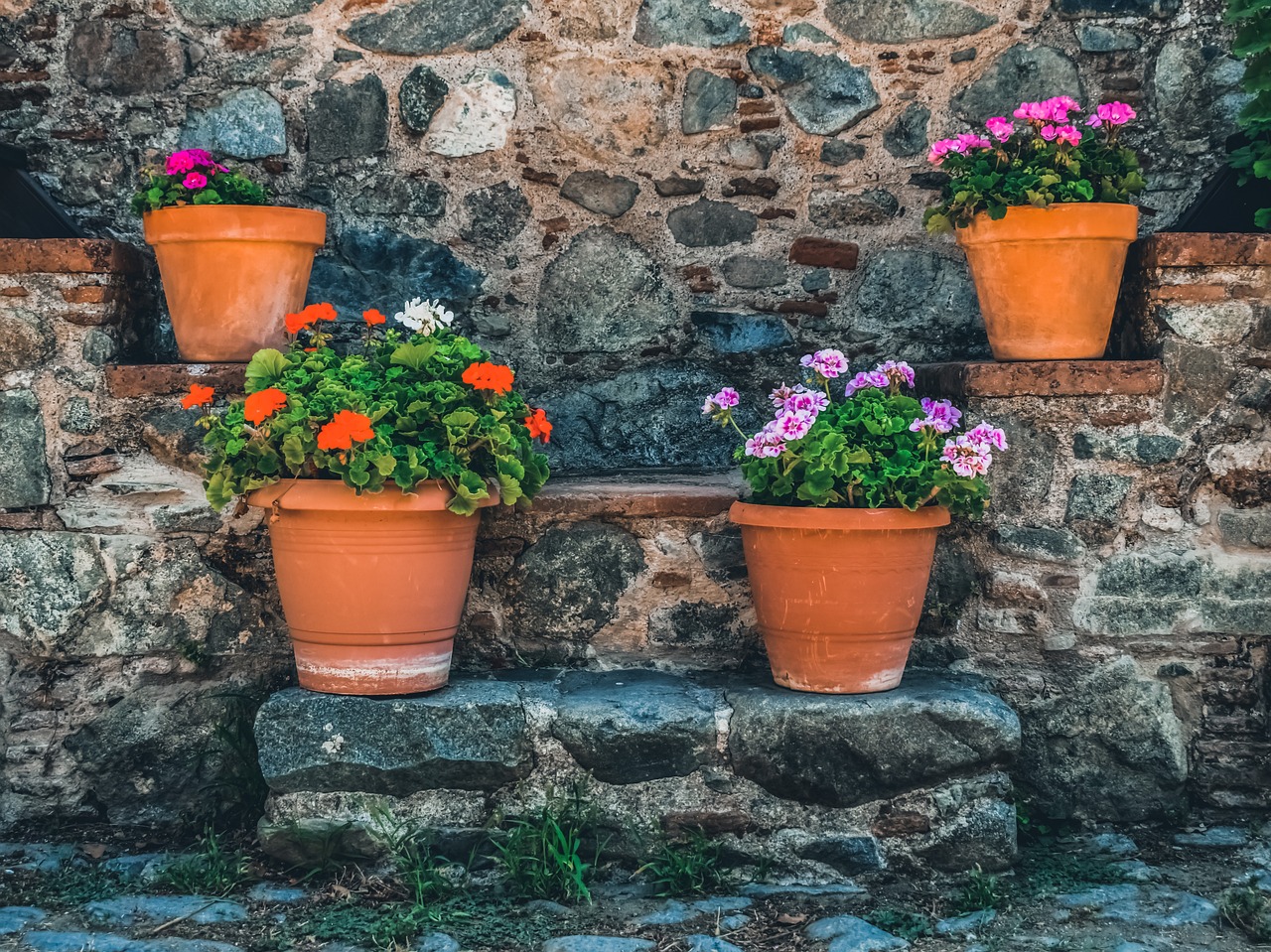
Have you ever found yourself lost in the moment, where the world around you fades away, and all that exists is you and the clay in your hands? Pottery is not just an art form; it's a practice that encourages mindfulness, a state of being fully present and engaged in the here and now. When you mold clay, you're not just shaping a vessel; you're also shaping your mental state. The tactile nature of clay requires your full attention, making it an excellent medium for cultivating mindfulness.
As you start to work with clay, you might notice how the texture feels between your fingers—smooth, gritty, or even cool to the touch. This sensory engagement is a key aspect of mindfulness. It draws your focus away from distractions and into the rhythm of your movements. Each pinch, roll, and press becomes a meditative exercise, allowing you to let go of the stressors of daily life. It's almost like a dance, where your hands lead the way and your mind follows, creating a harmonious balance.
In the world of pottery, every creation tells a story, and every imperfection adds character. This is a beautiful metaphor for life itself. Just as you learn to embrace the quirks of your pottery, you also learn to embrace the quirks of your own journey. Pottery encourages you to appreciate the moment, to find beauty in the process rather than just the end result. This shift in perspective can be incredibly liberating, allowing you to experience life with a renewed sense of wonder.
Moreover, pottery can serve as a powerful tool for enhancing your awareness. The focus required to create a piece forces you to tune into your thoughts and feelings. You might find that as you shape the clay, you're also shaping your understanding of your emotions. This process can be cathartic, helping you to release pent-up feelings and gain clarity on what truly matters to you.
To further illustrate this, consider the following benefits of engaging in pottery as a mindfulness practice:
- Enhanced Focus: The intricate details of shaping clay require your full attention, helping you to stay grounded in the moment.
- Stress Reduction: The repetitive motions involved in pottery can lead to a meditative state, reducing anxiety and promoting relaxation.
- Emotional Expression: Pottery allows for a non-verbal outlet for your feelings, providing a safe space for emotional exploration.
- Increased Self-Awareness: As you create, you may discover new insights about yourself, fostering personal growth.
In conclusion, pottery is more than just a creative outlet; it is a pathway to mindfulness. By immersing yourself in the process, you can cultivate a deeper connection with yourself and the world around you. So, the next time you sit at the potter's wheel or knead a lump of clay, remember that you're not just making art—you're also crafting a moment of peace and presence in your busy life.
Q: Do I need prior experience to practice pottery for mindfulness?
A: No, pottery is accessible to everyone, regardless of skill level. The focus is on the process, not the outcome.
Q: How often should I practice pottery to experience mindfulness benefits?
A: Even a few minutes a week can be beneficial. The key is consistency and allowing yourself to be present during your practice.
Q: Can pottery help with anxiety and stress?
A: Yes, many people find that the act of creating with clay can significantly reduce feelings of anxiety and promote relaxation.
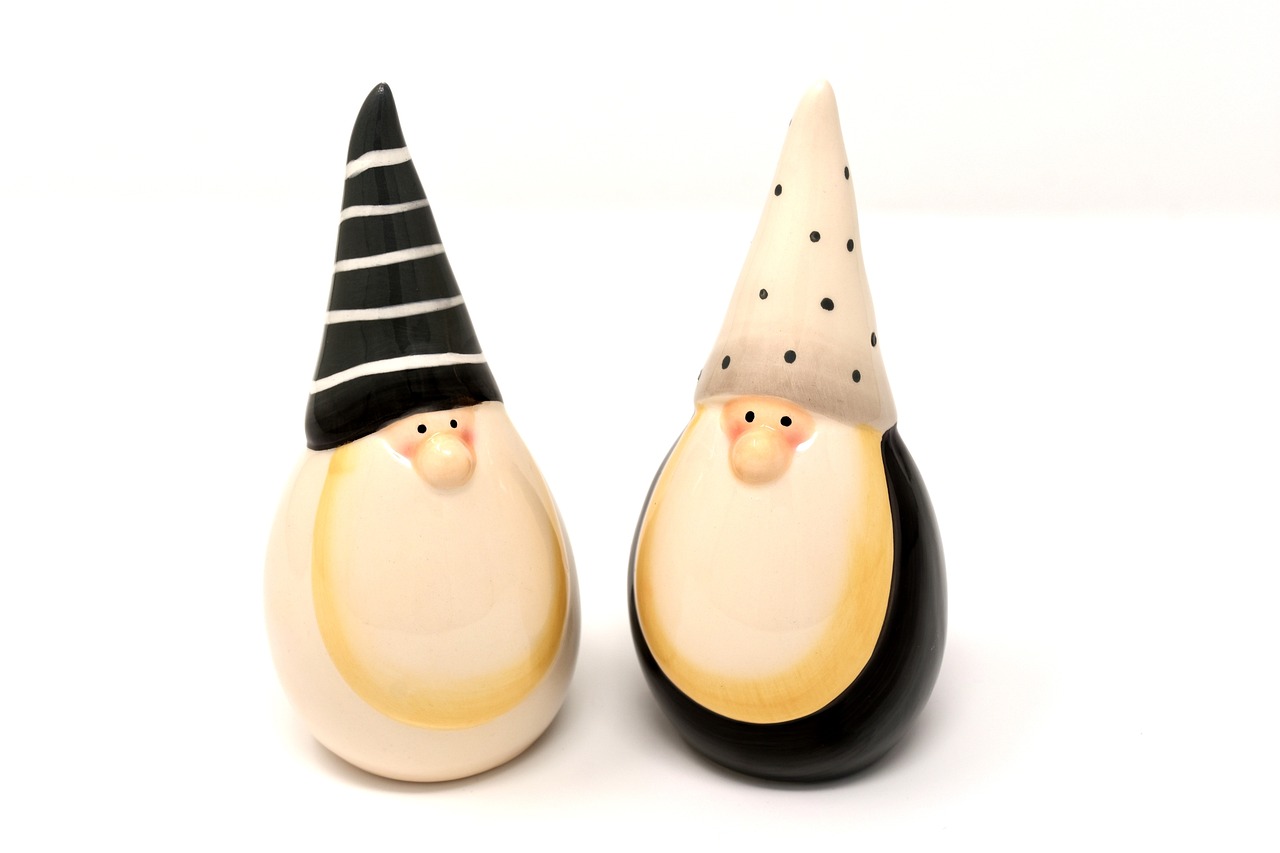
The world of ceramics is not just about shaping clay; it is an intimate journey into the depths of one’s emotions and thoughts. When you sit down at a pottery wheel or start molding a piece by hand, you’re not just creating an object; you’re engaging in a profound act of self-expression. This tactile medium allows you to channel your feelings into something tangible, transforming raw materials into beautiful artworks that reflect your inner self. Imagine the feeling of your hands sinking into the cool, soft clay, the way it yields to your touch, almost like it understands your unspoken thoughts. Isn’t that a magical experience?
Creating pottery can serve as a therapeutic outlet for many. As you shape and mold the clay, you may find yourself releasing pent-up emotions, whether it’s joy, sadness, frustration, or even anxiety. This process is akin to writing a diary but with your hands instead of a pen. Each swirl, pinch, and press of the clay can represent a different feeling or thought, allowing for a unique form of storytelling. The act of crafting something from nothing can be incredibly empowering, providing a sense of accomplishment that boosts your self-esteem and overall mental health.
Furthermore, ceramics can also act as a mirror to your psyche. Just like a painter chooses colors to convey emotions, potters can manipulate forms and textures to express their inner worlds. For instance, a rough, jagged piece might reflect turmoil, while a smooth, round bowl could symbolize tranquility and peace. This artistic expression goes beyond aesthetics; it offers insights into your emotional landscape. In this way, ceramics become a powerful tool for self-discovery, allowing you to explore who you are and what you feel in a safe and creative environment.
Engaging in ceramics can also foster a sense of community among those who share this passion. When you participate in group pottery classes or workshops, you connect with others who are on similar journeys of self-exploration. Sharing your creations and hearing the stories behind others' works can lead to deep, meaningful conversations and relationships. This communal aspect not only enhances your own experience but also helps to build a supportive network of individuals who understand the therapeutic benefits of pottery. Just think of it as a support group where the medium of communication is clay!
In summary, ceramics serve as a powerful form of expression that can lead to emotional release and self-discovery. Whether you’re working alone or in a group, the act of creating pottery allows you to explore your feelings, reflect on your experiences, and connect with others. So, if you’ve ever felt the urge to try your hand at pottery, why not take that leap? You might just find that the clay speaks to you in ways you never expected.
- What are the mental health benefits of working with ceramics?
Working with ceramics can reduce stress, foster creativity, and enhance mindfulness, contributing positively to mental health. - Can pottery help with emotional expression?
Yes! Pottery allows individuals to express their emotions through the creative process, facilitating emotional release and self-discovery. - Are there community benefits to participating in pottery workshops?
Absolutely! Pottery workshops create a sense of community, providing support and connection among participants. - How can I incorporate ceramics into my daily life?
Start small by dedicating time each week to practice pottery, or even explore simple ceramic projects at home.
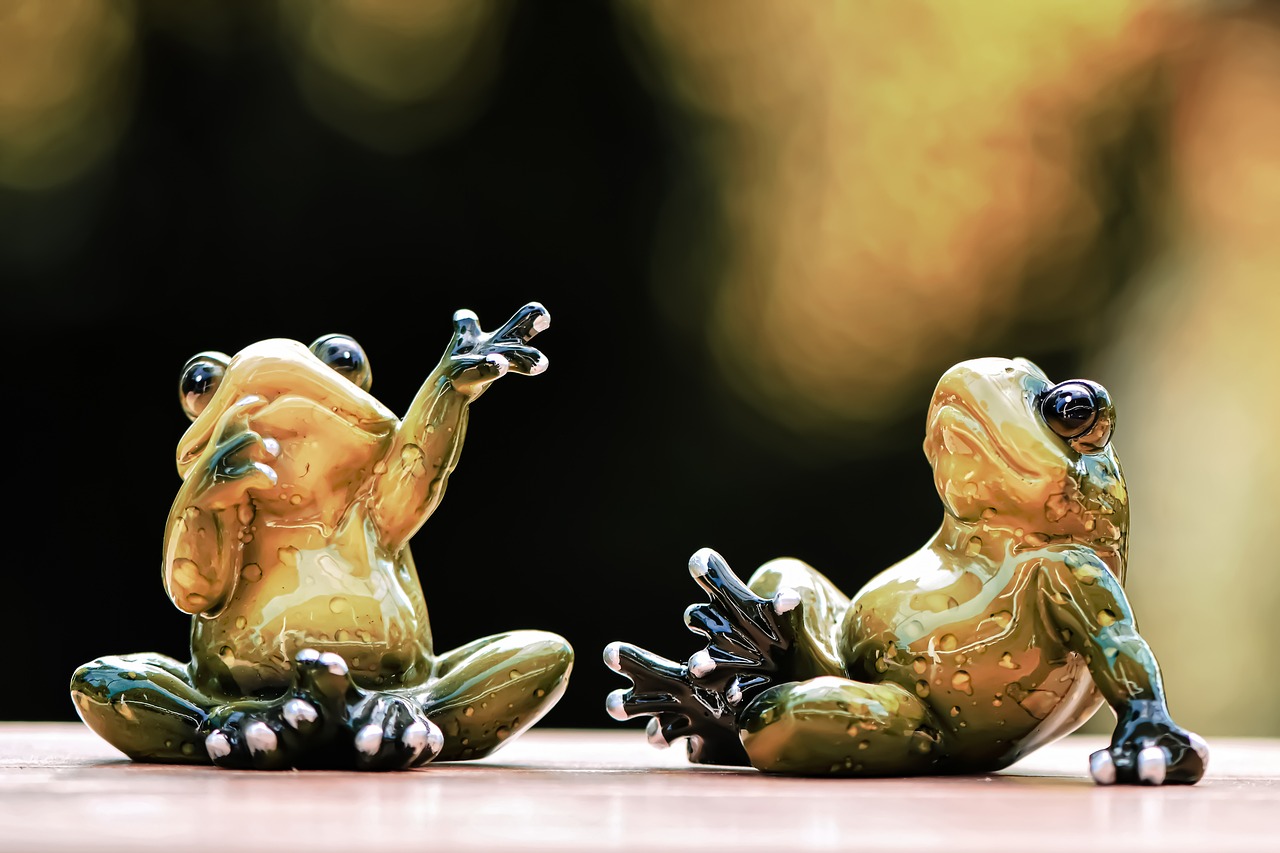
Participating in pottery workshops can be a transformative experience, offering not just a chance to create beautiful pieces of art, but also an opportunity to foster community and connection. Imagine walking into a room filled with the earthy aroma of clay, the soft sounds of laughter, and the gentle clinking of tools against pottery wheels. Here, the atmosphere is ripe for healing, as individuals come together to share their experiences while engaging in the therapeutic act of shaping clay.
These workshops serve as a safe haven where people can express themselves freely. The act of molding clay can be incredibly liberating, allowing participants to let go of their inhibitions and connect with their inner selves. As they work with their hands, they often find that their minds begin to quiet, creating a space for reflection and emotional release. The tactile nature of clay invites a sense of grounding, reminding us of the present moment and helping to alleviate feelings of anxiety or stress.
Moreover, the benefits of group dynamics in these workshops are profound. Participants often form bonds over shared challenges and triumphs, fostering a sense of belonging that can be immensely beneficial for mental health. In a world where isolation can feel overwhelming, these connections can provide a lifeline. The communal aspect of pottery workshops encourages individuals to support one another, share their stories, and celebrate each other's progress. This sense of community can significantly enhance the therapeutic experience, making it not just about the art of pottery, but also about the journey of healing together.
In addition to emotional support, therapeutic workshops often incorporate guided activities that can enhance the experience. For instance, facilitators might lead mindfulness exercises or discussions about the creative process, encouraging participants to explore their feelings and thoughts as they work. This structured approach can help individuals gain insights into their emotional landscapes, making the experience even more enriching.
To illustrate the impact of these workshops, consider the following table showcasing some of the key benefits:
| Benefit | Description |
|---|---|
| Emotional Expression | Participants can express their emotions through the creative process, leading to emotional release. |
| Community Support | Building connections with others fosters a sense of belonging and reduces feelings of isolation. |
| Mindfulness | The act of focusing on pottery helps enhance present-moment awareness and reduces stress. |
| Skill Development | Participants learn new techniques and refine their artistic skills, boosting confidence. |
In conclusion, therapeutic pottery workshops are much more than just a creative outlet; they are a powerful tool for emotional healing and personal growth. By coming together in a supportive environment, participants not only create art but also forge meaningful connections that can last a lifetime. Whether you're a seasoned potter or a complete novice, the therapeutic benefits of these workshops can be profound, making them an invaluable addition to one’s mental health toolkit.
- What should I expect in a pottery workshop?
Expect a welcoming environment where you can learn new skills, express yourself, and connect with others. - Do I need prior experience to join?
No, most workshops cater to all skill levels, from beginners to advanced potters. - How can pottery help with mental health?
Pottery promotes mindfulness, emotional expression, and community support, all of which contribute to improved mental well-being. - Are there any age restrictions for workshops?
Many workshops are open to all ages, but it's best to check with the specific studio for their policies.
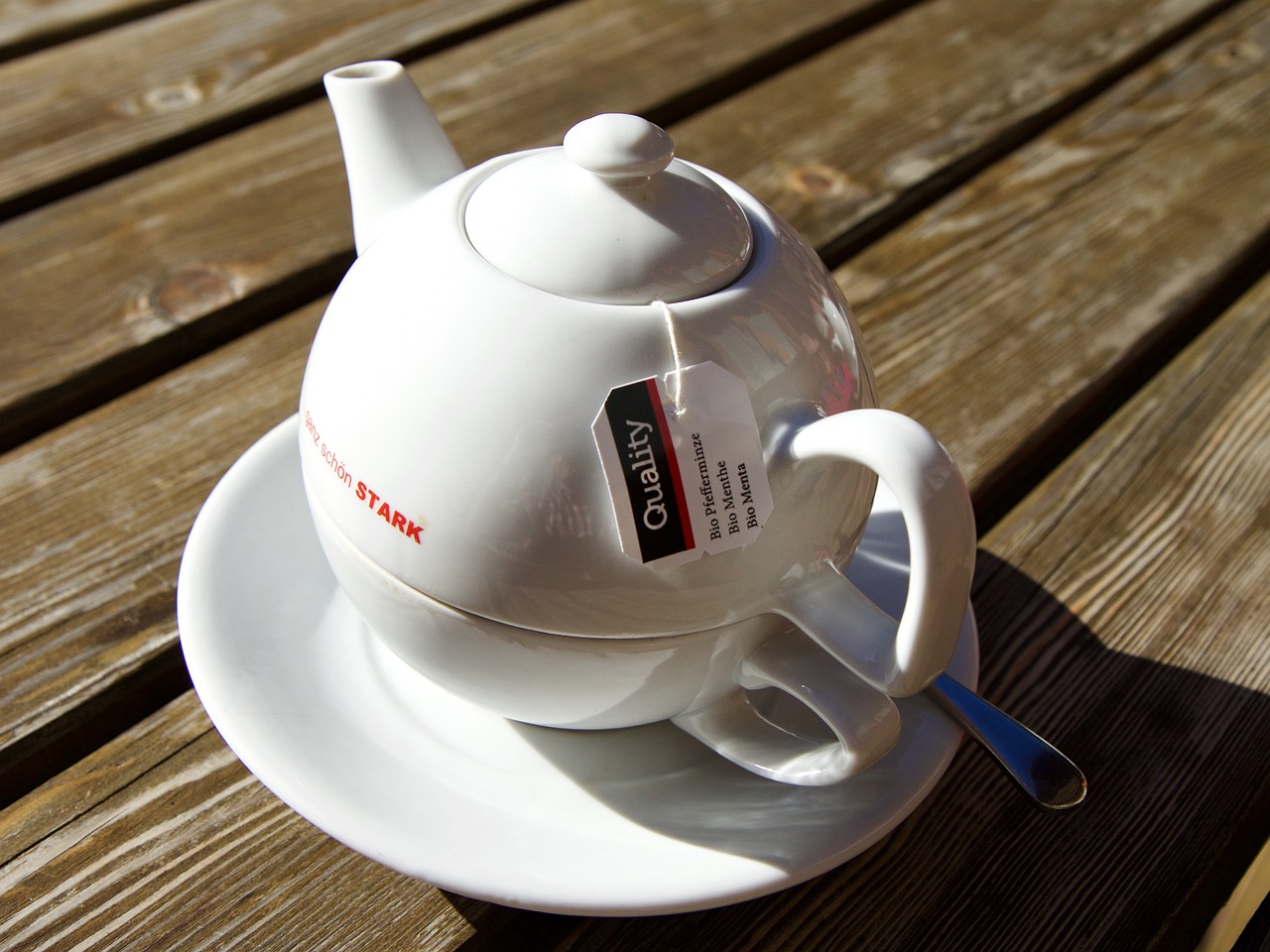
Engaging in pottery as a solitary activity can be a profoundly enriching experience, tapping into a wellspring of introspection and creativity. When you sit down with a lump of clay, it’s not just about crafting an object; it’s about embarking on a journey of self-discovery. The act of molding clay allows you to express your innermost thoughts and feelings in a tangible form, creating a direct connection between your emotions and your hands. This connection can be incredibly therapeutic, as it encourages a dialogue with oneself that often leads to personal insights and emotional clarity.
Imagine this: you’re sitting at your pottery wheel, the world around you fades away, and all that exists is you and the clay. This moment of solitude can serve as a sanctuary, a space where you can explore your thoughts without interruption. The process of working with clay can be meditative, providing a break from the chaos of everyday life. You become fully immersed in the tactile experience—the coolness of the clay, the resistance as you shape it, and the satisfaction of watching your creation take form. This sensory engagement is not just enjoyable; it can also facilitate a deep sense of relaxation and mindfulness.
Moreover, solitary pottery practice can enhance your problem-solving skills. As you encounter challenges in your work—whether it’s a piece collapsing or a design not coming together as envisioned—you learn to adapt and think creatively. This iterative process can mirror life’s challenges, teaching resilience and patience. Here are some specific benefits of individual practice:
- Enhanced Focus: Working alone allows for deep concentration, enabling you to hone your skills without distractions.
- Personal Reflection: The quiet nature of solo practice encourages introspection, allowing you to process emotions and thoughts more clearly.
- Creative Freedom: Without the influence of others, you can explore your unique style and preferences, leading to authentic artistic expression.
- Stress Relief: The repetitive motions of shaping and molding clay can be calming, helping to reduce anxiety and promote a sense of peace.
In addition to these benefits, individual pottery practice can also foster a sense of accomplishment. There’s something incredibly rewarding about finishing a piece that you’ve poured your heart and soul into. Each creation becomes a testament to your journey, reflecting your growth and evolution as both an artist and a person. This sense of achievement can boost your self-esteem, reinforcing the idea that you are capable of creating something beautiful and meaningful.
Ultimately, the individual practice of pottery is not just about making art; it’s about making space for yourself. It’s a chance to step away from the noise and chaos of the world and to connect with your inner self. Whether you’re an experienced potter or a complete novice, the benefits of engaging with clay on your own can be profound, offering an enriching experience that nurtures both your mind and spirit.
Q: What are the mental health benefits of working with pottery?
A: Working with pottery can reduce stress, enhance focus, and promote mindfulness. The tactile experience of clay can be soothing and can help individuals process emotions.
Q: Do I need prior experience to benefit from pottery?
A: No prior experience is necessary! Pottery is accessible to everyone, and beginners can find joy and therapeutic benefits in the creative process.
Q: How often should I practice pottery to see benefits?
A: Regular practice, even in short sessions, can enhance the therapeutic effects. Aim for a few times a week if possible, but even occasional sessions can be beneficial.
Q: Can pottery help with anxiety or depression?
A: Yes, many people find that engaging in creative activities like pottery can help alleviate symptoms of anxiety and depression by providing an outlet for expression and a sense of accomplishment.

When you think about the tactile experience of working with clay, it’s hard not to get a little excited. The texture of the clay, the weight in your hands, and the temperature against your skin all contribute to a unique sensory experience that can be incredibly soothing. Engaging with ceramics isn't just about creating something beautiful; it's about connecting with your senses in a way that promotes emotional healing and relaxation. Imagine kneading soft, pliable clay between your fingers, feeling it yield and respond to your touch. It’s like a conversation between you and the material, where every push and pull brings a sense of calm and grounding.
Moreover, the sensory stimulation provided by ceramics can help to quiet the mind. In our fast-paced world, where distractions are just a click away, taking the time to focus on the feel of the clay can be a form of meditation. As you mold the clay, your thoughts may drift away, allowing you to be fully present in the moment. This mindful engagement can act as a form of therapy, helping to manage anxiety and stress levels. The rhythmic motions of shaping the clay can even mimic the soothing effects of repetitive activities, like knitting or gardening, which are known to reduce tension.
But let’s not overlook the visual and olfactory aspects of working with ceramics. The rich, earthy colors of the clay and the smell of damp earth can evoke a sense of connection to nature, which is often missing in our urban lives. This connection can enhance feelings of well-being and tranquility. When you sit down to create, you’re not just working with your hands; you’re engaging all your senses, which can lead to a deeper emotional release. In fact, studies have shown that sensory engagement can trigger the brain's reward system, releasing endorphins that promote feelings of happiness and contentment.
Incorporating ceramics into your daily life doesn’t have to be complicated. Even simple activities like rolling out a piece of clay or creating small pinch pots can provide a sensory boost. If you’re new to ceramics, consider starting with some easy projects that allow you to explore different textures and forms. You might find that the simple act of creating helps you unwind after a long day, offering a therapeutic escape that rejuvenates your spirit.
In summary, the sensory stimulation provided by ceramics is a powerful tool for emotional healing. By engaging with the tactile, visual, and olfactory elements of clay, you can cultivate a sense of peace and mindfulness that enriches your life. Whether you’re a seasoned potter or just starting out, the benefits of working with clay are vast and profound. So why not give it a try? You may just discover a new passion that not only enhances your creativity but also supports your mental well-being.
- What are the benefits of working with ceramics? Working with ceramics can enhance creativity, reduce stress, and promote mindfulness through tactile engagement.
- How does ceramics help with anxiety? The sensory experience of molding clay can serve as a form of meditation, allowing individuals to focus and quiet their minds.
- Can anyone start pottery as a hobby? Absolutely! Pottery is accessible to people of all skill levels, and many studios offer beginner classes.
- What materials do I need to start working with clay? Basic materials include clay, a work surface, tools for shaping, and a kiln for firing your creations.
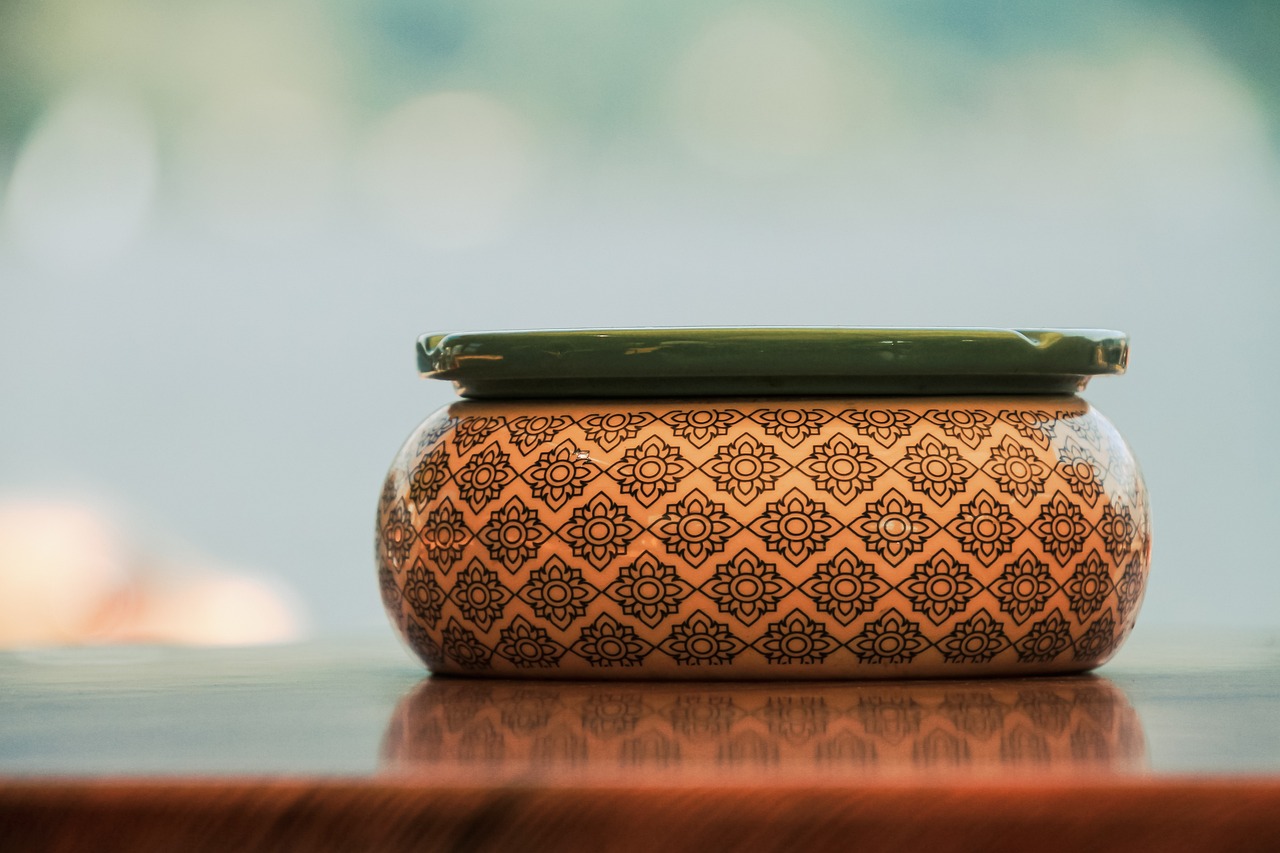
Art therapy is a fascinating field that utilizes various artistic mediums to promote healing and self-discovery. Among these mediums, ceramics stands out as a particularly powerful tool. The tactile nature of clay allows individuals to engage with their emotions in a unique way, making it an ideal medium for therapeutic practices. When we mold clay with our hands, we are not just creating objects; we are also shaping our thoughts and feelings. This hands-on approach can transform abstract emotions into tangible forms, offering a sense of control and accomplishment.
In therapy sessions, ceramics can serve multiple purposes. For instance, clients might create pieces that symbolize their feelings or experiences, helping them articulate emotions that are often difficult to express verbally. The process of working with clay can be incredibly liberating; it encourages a sense of play and experimentation, which is often lost in the hustle and bustle of everyday life. As clients immerse themselves in the creative process, they may find themselves reflecting on their experiences, leading to profound insights and emotional breakthroughs.
Moreover, the act of shaping and molding clay can be incredibly soothing. The repetitive motions involved in pottery can help reduce anxiety and promote a sense of calm. Many therapists incorporate ceramics into their practice not just for the artistic expression it allows but also for its therapeutic benefits that can aid in emotional regulation. Through these sessions, clients often report feeling more grounded and connected to their emotions, which can significantly enhance their overall mental well-being.
To illustrate the effectiveness of ceramics in art therapy, consider the following table that outlines some of the benefits observed in therapeutic settings:
| Benefit | Description |
|---|---|
| Emotional Expression | Clients can express complex emotions through the creation of pottery, which can facilitate discussions about their feelings. |
| Mindfulness | Working with clay encourages clients to focus on the present moment, enhancing their mindfulness and reducing stress. |
| Social Interaction | Group pottery sessions foster connections among participants, building a supportive community. |
| Self-Discovery | Creating pottery can lead to insights about oneself, promoting personal growth and self-awareness. |
As we delve deeper into the world of ceramics within art therapy, it’s essential to recognize that every individual’s journey is unique. Some may find solace in the act of creating, while others may discover healing through the stories their creations tell. The beauty of ceramics lies in its versatility; it can be tailored to meet the needs of each individual, providing a personalized therapeutic experience. Whether it’s through a community workshop or a one-on-one session with a therapist, the potential for healing through ceramics is boundless.
- What is art therapy? Art therapy is a therapeutic practice that uses artistic methods to help individuals express themselves and process emotions.
- How can ceramics help in therapy? Ceramics allows individuals to express emotions creatively, promotes mindfulness, and can facilitate discussions about feelings.
- Do I need prior experience in pottery to participate in art therapy? No, art therapy is designed for individuals of all skill levels, and the focus is on the therapeutic process rather than the final product.
- Can ceramics be beneficial for children? Yes, ceramics can be particularly beneficial for children as it helps in developing fine motor skills and provides a safe outlet for self-expression.
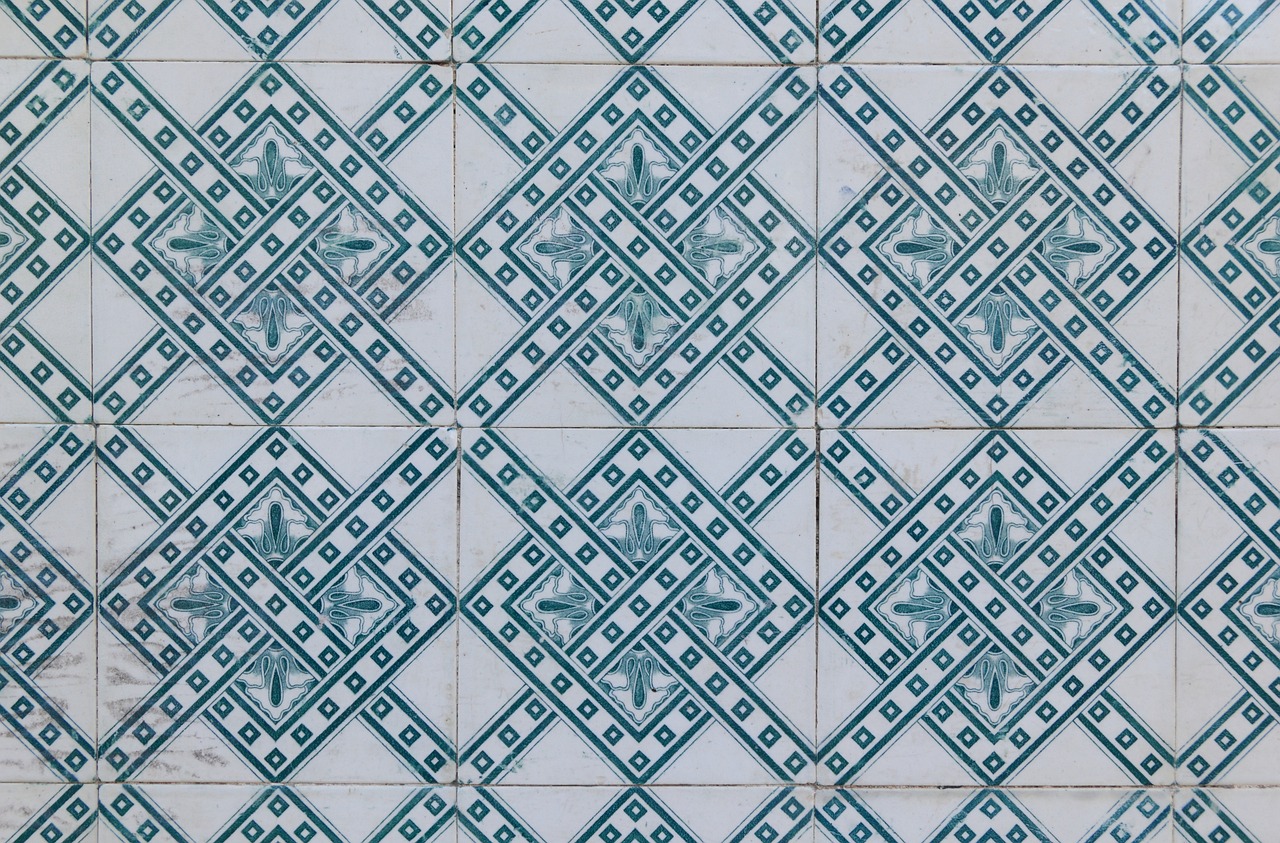
When it comes to the therapeutic benefits of ceramics and pottery, real-life examples often speak louder than words. Numerous individuals have turned to clay as a means of healing, and their stories illustrate the profound impact this art form can have on mental health and emotional well-being. For instance, consider the journey of Sarah, a young woman who battled anxiety and depression for years. After joining a pottery class, she discovered that working with her hands allowed her to express feelings she struggled to articulate. The tactile sensation of the clay not only provided a calming effect but also became a channel for her emotions, leading to significant improvements in her mental state.
Another inspiring case is that of David, a veteran who faced the challenges of PTSD. Through a structured pottery therapy program, he learned to channel his experiences into his creations. The act of molding clay helped him to process traumatic memories in a safe, supportive environment. David often shares that the pottery wheel became his sanctuary, a place where he could confront his feelings and find solace. His story exemplifies how ceramics can facilitate emotional release and foster personal growth.
Moreover, community workshops have shown remarkable success in bringing people together. A local art center initiated "Pottery for Wellness" sessions, where participants of all ages could engage in the craft while sharing their stories. The sense of camaraderie that developed among attendees created a supportive atmosphere, allowing individuals to bond over shared experiences. Many participants reported feeling less isolated and more connected, highlighting the social benefits of engaging in pottery as a group activity.
These case studies underscore the versatility of ceramics as a therapeutic tool. They illustrate that whether it’s through individual practice or group workshops, the act of creating with clay can lead to emotional healing and personal discovery. The stories of Sarah and David, along with countless others, remind us that pottery is more than just an art form; it is a pathway to recovery and self-exploration.
- What are the mental health benefits of working with ceramics?
Working with ceramics can reduce stress, enhance mindfulness, and provide a means of emotional expression. - Can pottery be used in therapy?
Yes, many therapists incorporate pottery into their practice as a way for clients to process emotions and foster healing. - Do I need prior experience to join a pottery class?
No, pottery classes typically welcome beginners and provide guidance throughout the creative process. - How can I incorporate ceramics into my daily routine?
Consider setting aside time each week for a pottery session, or explore simple clay projects at home to enhance your well-being.

Integrating ceramics into your daily routine can be a game-changer for your mental health and overall well-being. Think about it: how often do we rush through our day, barely pausing to breathe or reflect? By making ceramics a part of your life, you can create intentional moments that foster mindfulness and creativity. Whether you're a seasoned potter or a complete novice, there are countless ways to incorporate this therapeutic practice into your everyday activities.
One simple way to start is by dedicating a specific time each week to work with clay. This could be as little as an hour on a Saturday morning or a cozy evening session after work. Setting aside this time not only gives you something to look forward to but also establishes a routine that prioritizes your mental health. You might consider joining a local pottery class or workshop, which not only provides guidance but also connects you with like-minded individuals who share your passion for creativity.
Another fantastic approach is to keep a small pottery project on hand at home. This could be a simple bowl or a mug that you can work on whenever you have a few spare moments. The beauty of working with clay is that it doesn’t have to be a grand undertaking; even small, casual sessions can be incredibly fulfilling. Just think of it as a way to pause, breathe, and engage your senses. The tactile experience of molding and shaping the clay can be incredibly grounding.
Moreover, you can incorporate ceramics into your home decor. Surrounding yourself with handmade pottery not only beautifies your space but also serves as a constant reminder of your creative journey. Each piece can tell a story, reflecting your emotions and experiences. Imagine sipping your morning coffee from a mug you crafted yourself—it’s a daily reminder of your ability to create and express yourself.
For those who enjoy socializing, consider hosting pottery nights with friends or family. Gather around the table with some clay and tools, and let your creativity flow. Not only is this a fun way to bond, but it also transforms the act of creating into a shared experience that fosters deeper connections. You might even find that discussing your creations opens up conversations about emotions and experiences, further enhancing the therapeutic benefits of pottery.
Finally, don't underestimate the power of reflection. After each pottery session, take a moment to jot down your thoughts or feelings in a journal. This practice can help you process your emotions and track your progress as you develop your skills. You might be surprised at how much clarity and insight this simple act can provide.
In conclusion, incorporating ceramics into your daily life is not just about creating beautiful objects; it's about nurturing your soul and fostering a deeper connection with yourself and others. Whether through dedicated practice, home decor, social gatherings, or personal reflection, ceramics can enrich your life in ways you never imagined. So, grab some clay, let your creativity flow, and watch as your daily routine transforms into a canvas of healing and self-discovery.
- How can I start working with ceramics if I'm a beginner?
Consider taking a local pottery class or watching online tutorials to get started. The key is to practice regularly and not be afraid to make mistakes!
- What are some simple pottery projects I can try at home?
Start with small items like coasters, simple bowls, or decorative tiles. These projects are manageable and allow for creativity without overwhelming you.
- Can ceramics really help with mental health?
Absolutely! The process of working with clay is therapeutic and can help reduce stress, promote mindfulness, and encourage self-expression.
- How often should I practice pottery for the best results?
Consistency is key! Aim for at least once a week, but even short sessions can be beneficial. The more you engage with the clay, the more you'll improve and enjoy the process.
Frequently Asked Questions
- What are the mental health benefits of working with ceramics?
Working with ceramics can significantly enhance mental health by promoting relaxation and reducing stress. The tactile nature of clay allows individuals to engage in a meditative process, fostering emotional well-being and a sense of grounding.
- How does pottery encourage mindfulness?
Pottery requires focus and presence, which naturally encourages mindfulness. As you shape and mold the clay, you become more aware of the moment, enhancing your appreciation for the creative process and the sensory experiences involved.
- Can ceramics be a form of emotional expression?
Absolutely! Creating pottery provides a unique outlet for expressing emotions and thoughts artistically. This form of artistic expression can facilitate emotional release and self-discovery, allowing individuals to connect with their inner feelings.
- What are the benefits of participating in pottery workshops?
Participating in pottery workshops fosters community support and connection. These group activities not only enhance relationships but also improve mental health by providing a shared space for creativity and emotional exploration.
- Is there value in practicing pottery alone?
Yes, engaging in pottery as a solitary activity can enhance personal reflection. Working alone with clay allows for introspection and deepens the creative process, making it a powerful tool for self-exploration.
- How does sensory stimulation from clay contribute to healing?
The sensory experience of working with clay—its texture, weight, and temperature—can be incredibly soothing. This sensory engagement contributes to emotional healing and relaxation, making pottery a therapeutic practice.
- What role does ceramics play in art therapy?
Ceramics is often incorporated into art therapy as a tool for healing. Therapists use pottery to help clients process emotions and overcome trauma, providing a creative outlet that can lead to significant breakthroughs.
- Are there any success stories from using ceramics in therapy?
Yes! There are numerous inspiring stories of individuals who have experienced transformative effects from pottery in therapeutic settings. These case studies highlight the profound impact ceramics can have on emotional healing and personal growth.
- How can I incorporate ceramics into my daily life?
Integrating pottery into your daily routine can enhance well-being in simple ways. Whether it's setting aside time for clay work or using ceramics in home decor, these practices can provide ongoing therapeutic benefits and enrich your life.



















